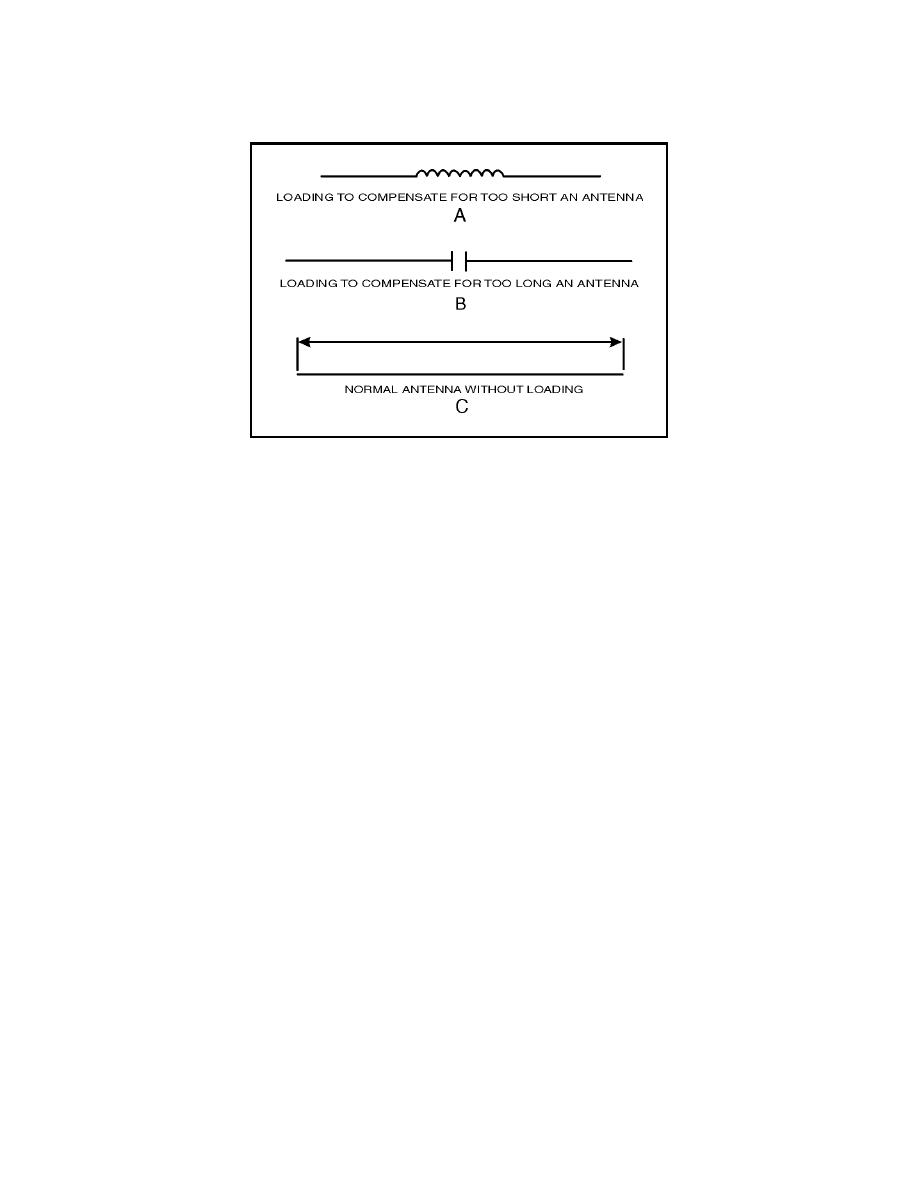
TC 9-64 _________________________________________________________________________
Figure 4-14. Electrically Equal Antenna
4-73. Before you look at the various types of antennas, consider the
relationship between the wavelength at which the antenna is being operated
and the actual length of the antenna. An antenna does not necessarily
radiate or receive more energy when it is made longer. Specific dimensions
must be used for efficient antenna operation.
4-74. Nearly all antennas have been developed from two basic types, the
Hertz and the Marconi. The basic Hertz antenna is one-half wavelength long
at the operating frequency and is insulated from ground. It is often called a
dipole or a doublet. The basic Marconi antenna is one-quarter wavelength
long and is either grounded at one end or connected to a network of wires
called a counterpoise. The ground or counterpoise provides the equivalent of
an additional one-quarter wavelength, which is required for the antenna to
resonate.
HALF-WAVE ANTENNAS
4-75. A half-wave antenna (referred to as a dipole, Hertz, or doublet) consists
of two lengths of wire rod, or tubing, each one-quarter wavelength long at a
constructed. The half-wave antenna operates independently of ground;
therefore, it may be installed far above the surface of the earth or other
absorbing bodies. For a dipole, the current is maximum at the center and
minimum at the ends. Voltage is minimum at the center and maximum at
the ends, as shown in figure 4-7.
Radiation Patterns
4-76. In the following discussion, the term dipole is used to mean the basic
half-wave antenna. The term doublet is used to indicate an antenna that is
very short compared with the wavelength of the operating frequency.
Physically, it has the same shape as the dipole.
4-22



 Previous Page
Previous Page
